What is it that sets a good piece of gear apart from a great one? I’ve never found it to be price, as some of my favorite equipment was made by Coleman and bought second hand at goodwill. I don’t believe it to be materials either, since carbon fiber snaps, titanium can bend, and wood may crack. For me, a great piece of gear is something simple, an item that does its job well every time but then goes on to do more. It is something that delivers on every promise, and comes to be something you count on each and every trip. Just over a year ago I installed an Expedition Roof Rack from Baja Rack on our 300 Tdi Discovery, and while it is not perfect, its sturdy build and thoughtful design have earned it a spot on my list of favorite kit.
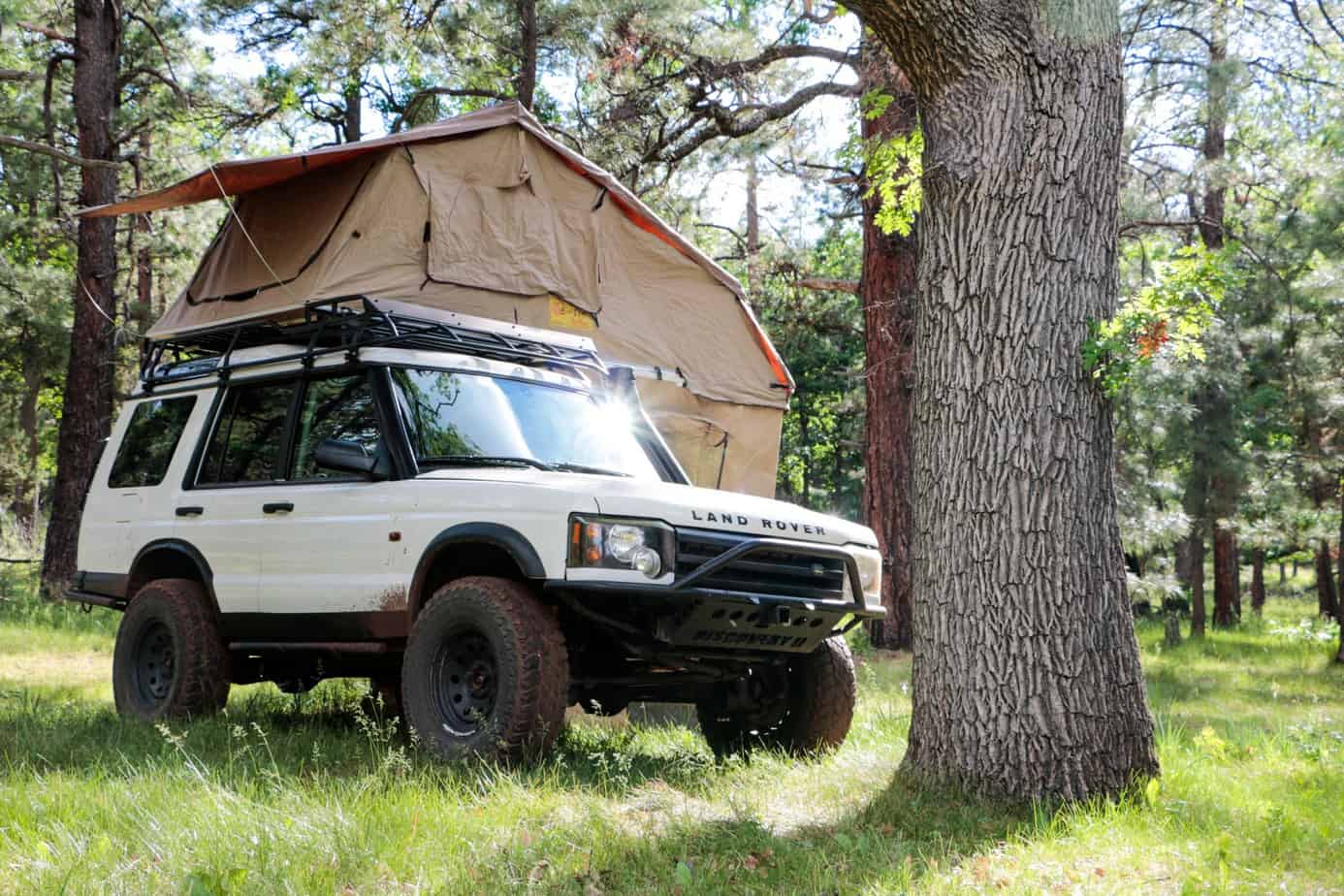
Specifications and General Information
The Expedition series rack features a raised basket up front for fuel cans, storage boxes, fire wood, and various other sundries, along with a separate flat section in the rear intended for a roof top tent. Besides presenting a cleaner look, this flat back design allows the owner to mount their tent lower than a standard system would otherwise permit, giving you precious inches back on an already top heavy truck. The rack is fully welded eliminating the chance for nuts and bolts to come loose, and a molded deflector is installed up front to reduce wind noise. While we haven’t utilized them yet, there are also four pre-drilled tabs welded on the front of the rack to make mounting any auxiliary lights a breeze. Interestingly enough the Expedition Rack fits both the Land Rover Discovery I and II using the stock gutter mounts, and despite this crossover it retains full functionality of all standard features including both sunroofs and the rear skylights.
Wind Deflector: 0.062” (1.57mm), 5050-H32 Aluminum
Finish: Epoxy primer (rust inhibitor) with black powder coating
Rack weight: 90 Lb (40.9Kg)
Dynamic Weight Capacity: 400Lb (181 kg)
Static Weight Capacity: 700Lb (318 kg)
Measurements outside Frame: 59” (1498.6mm) Wide x 94.5” (2400.3 mm) Long x 5” (127mm) tall. Flat area for Roof Top Tent 59” (1498.6mm) Wide x 41” (1,041.4 mm) Long
Max Hight: 14.75” from gutter
Cargo area: 22.45ft² (2.08m²)
Mounting method: Rain gutter mounts (8 total).
Installation
They say you only get one chance at a first impression, and I would have to say that the Baja Rack nailed it. Upon unwrapping the product I was immediately impressed with the expert packaging job, Everything seemed to be in order and there was no damage or scratching to the product in any way. It didn’t take long though before my elation changed to surprise and then frustration when I couldn’t find the parts bags. I grouchily fumbled around the instructions to see what bits and pieces I was missing, only to realize that everything was already there and ready to go. Pre-assembly, what a concept! After that the entire installation consisted of simply lifting the rack over the truck, setting it down, and tightening. The hardware all adjusted easily and the tensioning system made a proper fit much easier to achieve than the single screw used to tighten most gutter mounts. When all was said and done the entire process took less than thirty minutes, and it was by far the easiest roof rack installation I have done.

Driving and Daily Use
The first thing most people notice about a roof rack is usually the sound or lack therof. With a tubular structure and a rather large front profile I expected the Expedition Rack to be fairly loud, but once again I was pleasantly surprised. Though there was an audible increase in wind noise, it wasn’t a howling or whistling as I had expected. Rather it seemed as though someone had just turned the wind’s volume up a notch. I’m sure that this is in part thanks to the standard wind deflector covering the upper front of the rack, however the large quantity of remaining exposed tubing suggests some other wizardry.

During our long term tests we found the impact on fuel economy to be negligible. Whether this is due to the great design of the rack or the terrible aerodynamics of the Discovery we are not sure, but you won’t be kicking yourself every day over a five mpg drop.
Stability also remained favorable after the addition of the rack. Despite weighing 90 pounds it went unnoticed in day to day driving, only making its effects felt during hard turns and emergency maneuvers. Of course this was no longer the case once we installed the roof top tent, and there was a predictable increase in body roll in turns and tilting on off-camber trails.
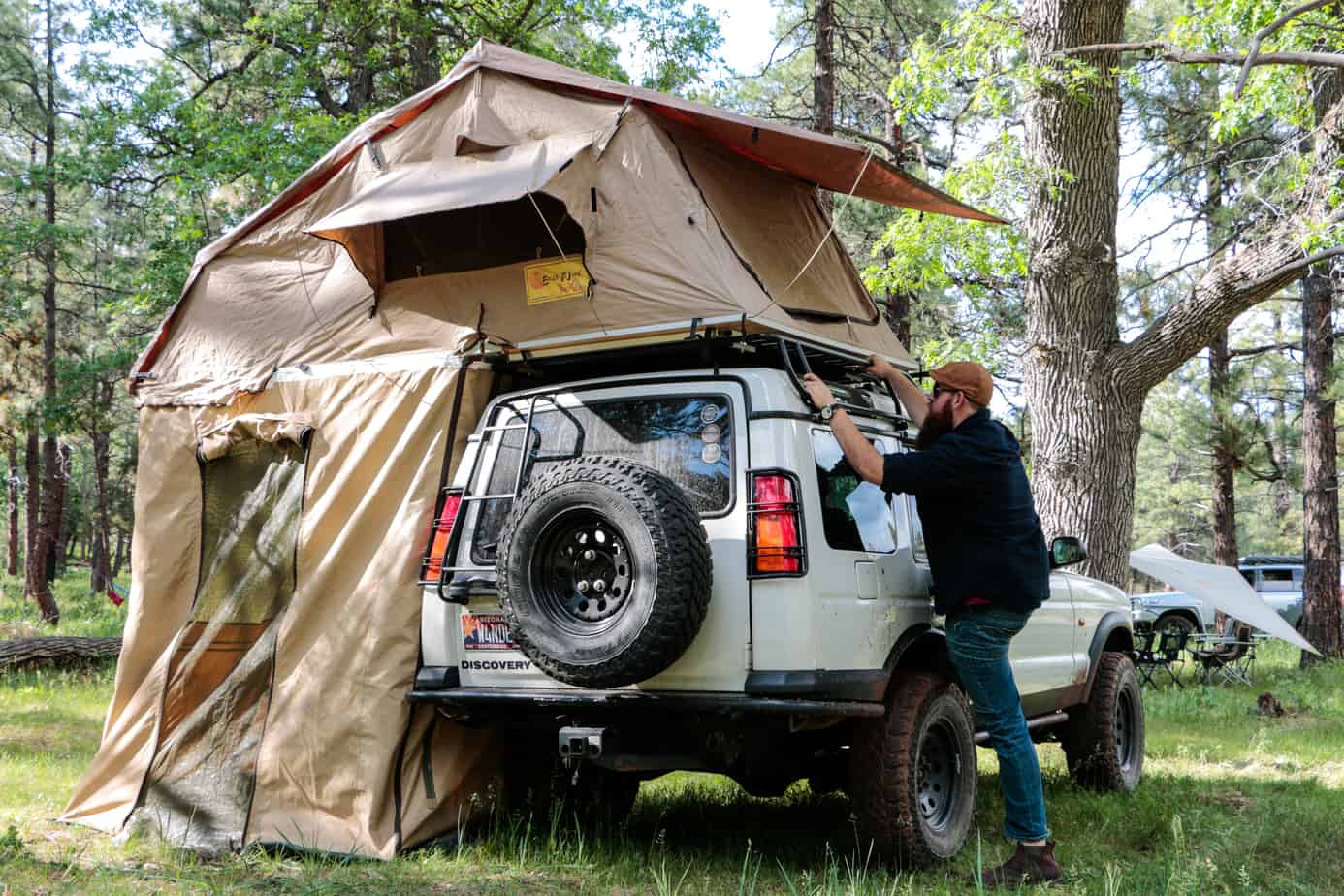
Bearded lumberjack man for scale
At 6’4″ and 245 lbs I’m not a small guy, so static weight capacity and rigidity is important to me when sleeping on the roof. During the nights I spent atop this truck I was not only impressed by how solid the rack felt as I crawled around, but also how quiet it was. My rolls and movements in the tent are usually echoed by creaks and groans from the rails below, but for the first time I actually felt like I could sleep without contemplating the ever mounting metal fatigue on the bars.
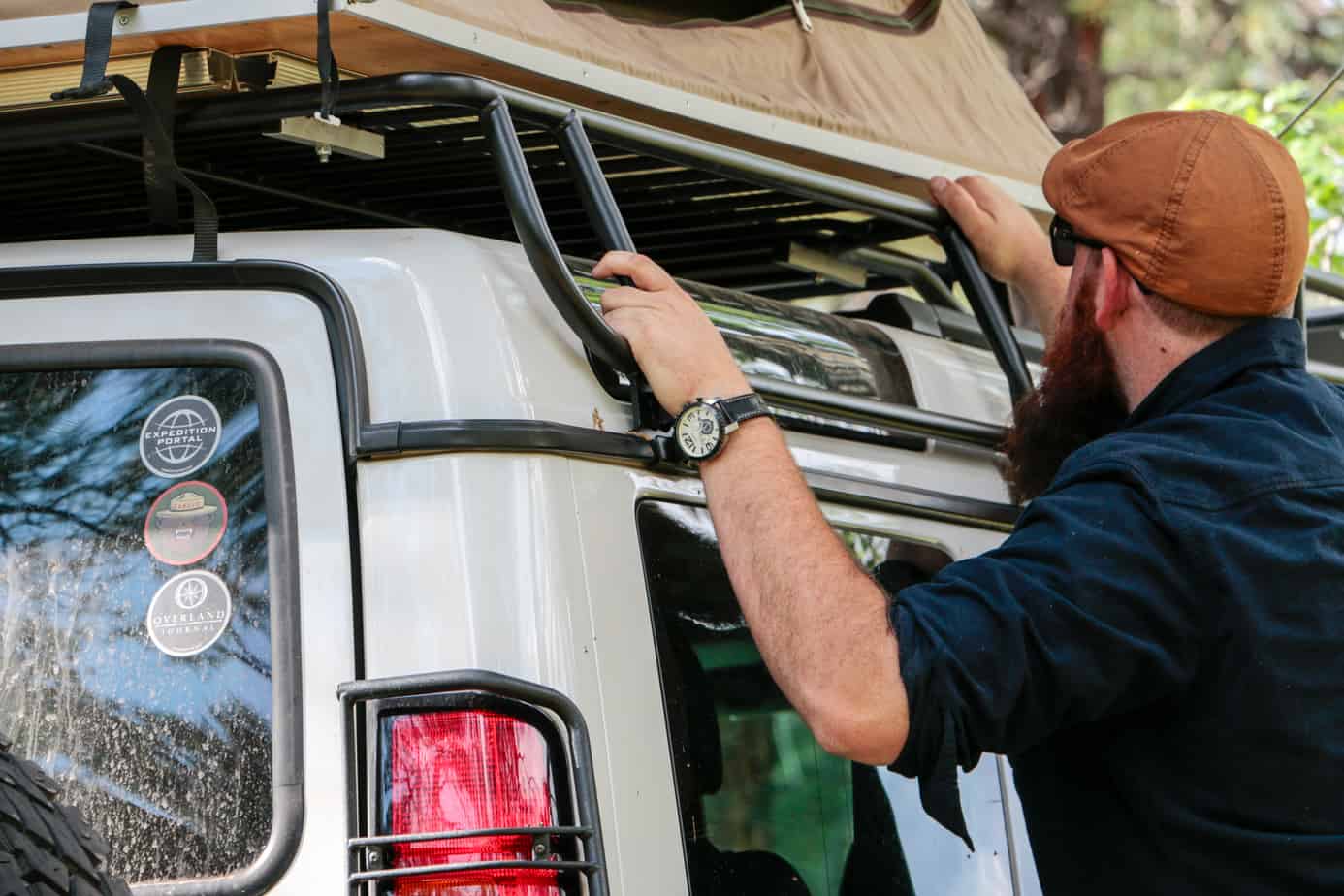
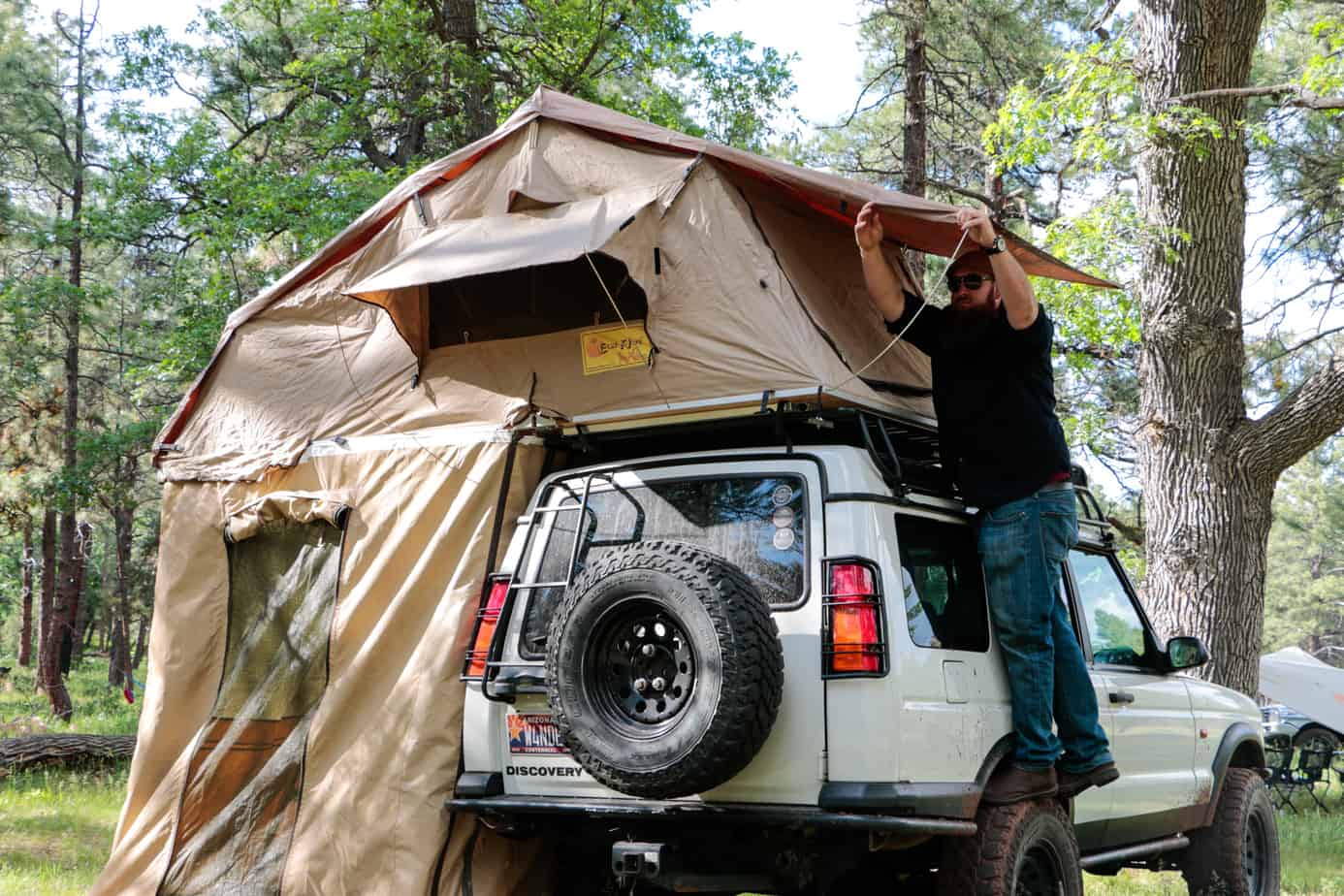
Of all the great features though, I found my favorite to be the layout itself. I can’t tell you how many times I have pulled myself half way up to a roof rack only to grasp for a hold and subsequently fall on my ass. Baja Rack clearly thought of this and put smooth vertical support bars in perfect locations all around the truck. From stepping on the rear tire to adjust the tent, to balancing on the front door sill and loading cargo, even the most uncoordinated overlander can keep their cool with this rack. Go ahead, have that beer before unloading.
Another A+ goes to the separation of the cargo basket from the tent in the front. While it does limit your storage options in some ways, it prevents boxes and other equipment from sliding against your cover while driving. We’ve seen people learn the hard way how thin a PVC tent cover can really be, and these load bars make it one less worry on our journeys.
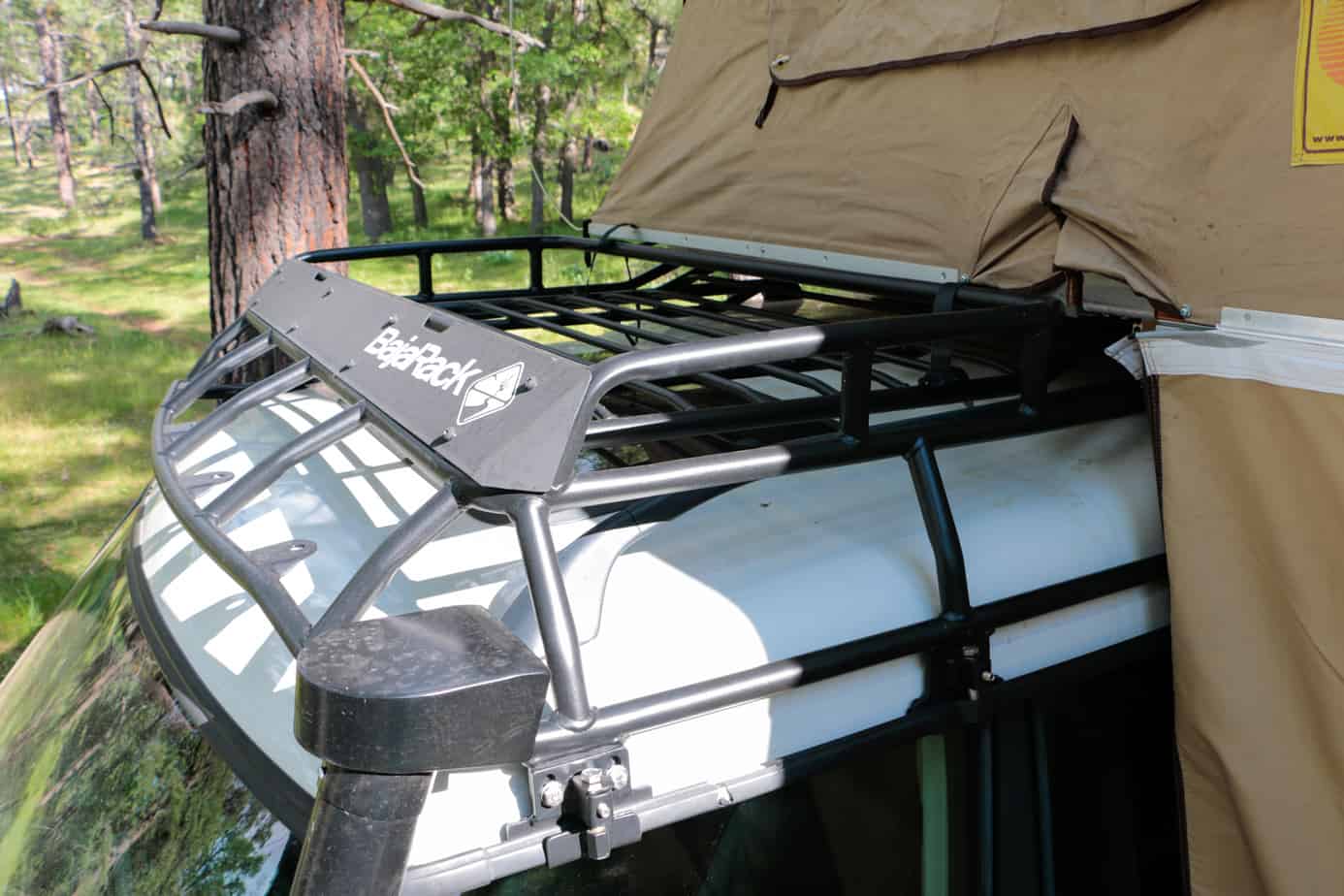
Negatives
It’s easy for journalists to blab on about all the positives of a product, but in truth it is the problems and flaws that readers really need to hear about. For this reason I always hunt for any negatives, and in over a year of ownership I have only found two. The first one only made itself visible last week during a wash. After continuous exposure to the Arizona sun, the wind deflector has started to fade allowing a black film to wash off of it. It has zero effect on the function, but if your car lives uncovered you might want to hit it with a few shots of clear coat upon purchase. The second issue was also uncovered recently. Two of the mounting brackets had a thin layer of rust that had washed down from inside the bolt holes during a rain storm. It wiped off with a cloth and cleaner, but it made me feel like I may have scraped off the finish inside the steel brackets during install. I would recommend hitting these with a sealer before long term use.
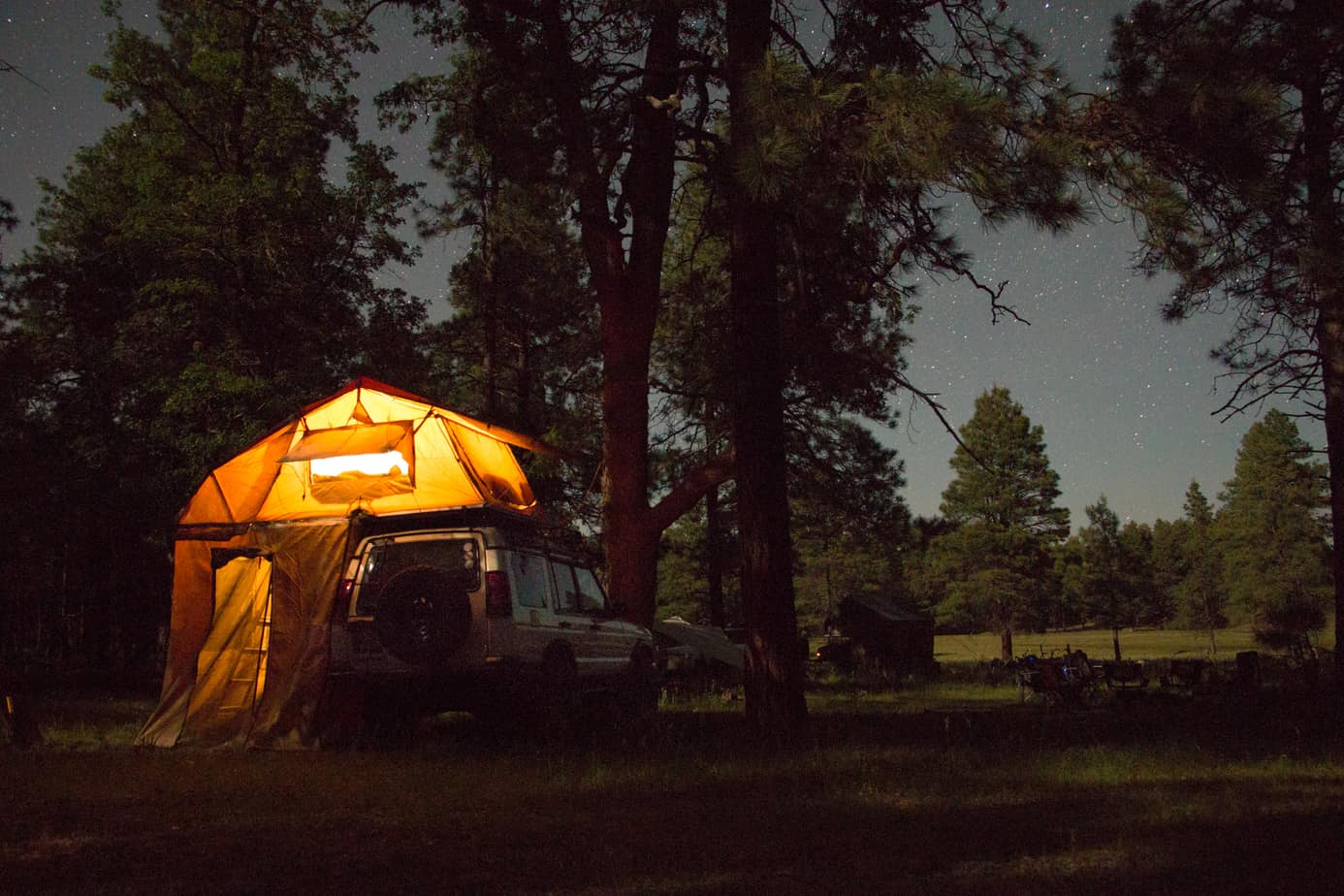
The Verdict
The Expedition Roof Rack is a rare blend of classic design with modern functionality, and I for one am loving it. It holds up to whatever loading and lashing we throw at it, doesn’t complain at the weight and strain of sleeping occupants, and even makes the setup and tear down of your car-top abode easier. While it is not the cheapest option out there at $970 USD, it is still far from the most expensive and in my opinion well worth the money.
So does it make the grade of a great product? I would have to give it a resounding yes. If you own a Discovery and want to mount a roof-top tent, look no further than the Expedition Roof Rack.
For more information or to place an order, check out the Baja Rack website here.


